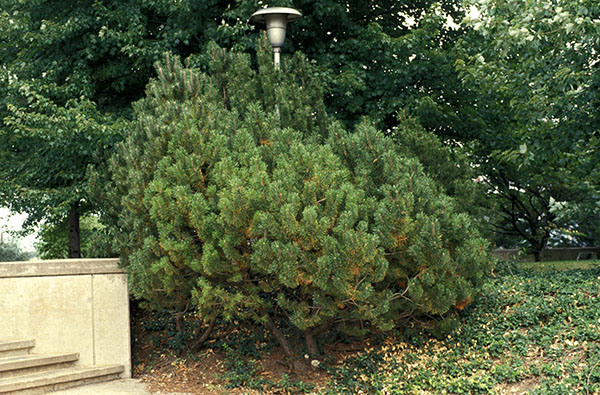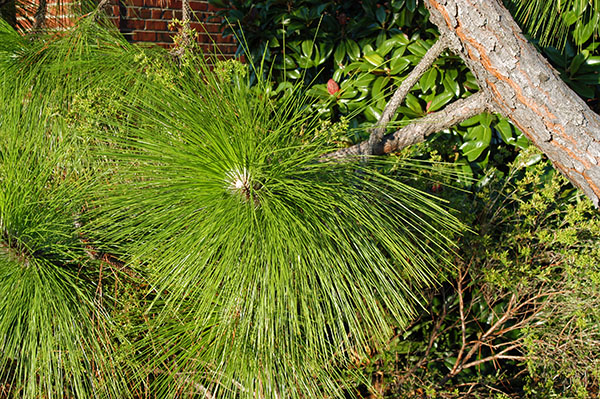Pinus nigra
Austrian Pine
Europe: Austria to c. Italy, Greece, and Yugoslavia
Broadly conical when young, aging to attractive, flat-topped trees.
Full sun and moist, well-drained soils. Grows on poor, rocky soils in parts of its native range. This pine is tolerant of wind, alkaline soils, and urban conditions.
Large specimen tree, or as a grove of trees in large areas such as parks.
Needles are 3 to 6 inches in length, arranged in bundles of two. Needles are stiff to the touch. Leaf sheath is about .5 inches long and persistent.
Buds are ovate to cylindrical, .5 to 1 inch long, gray-brown or whitish in color and somewhat resinous.
Mature bark is distinctive and attractive. Large, mature trees have fissured bark with broad, flat ridges that are light gray in color, contrasting with the dark brown, nearly black fissures.
Monoecious, female reproductive structures are yellow-green, males are yellow.
Cones typically in groups of 2 to 4 and nearly sessile on the stem. Cones are 2 to 4 inches long and yellow-brown to light brown in color, prickle often present.
Seed
There are several varieties due to its disjunct range in its native habitat. There is considerable discussion with regard to splitting this species into several new species.






